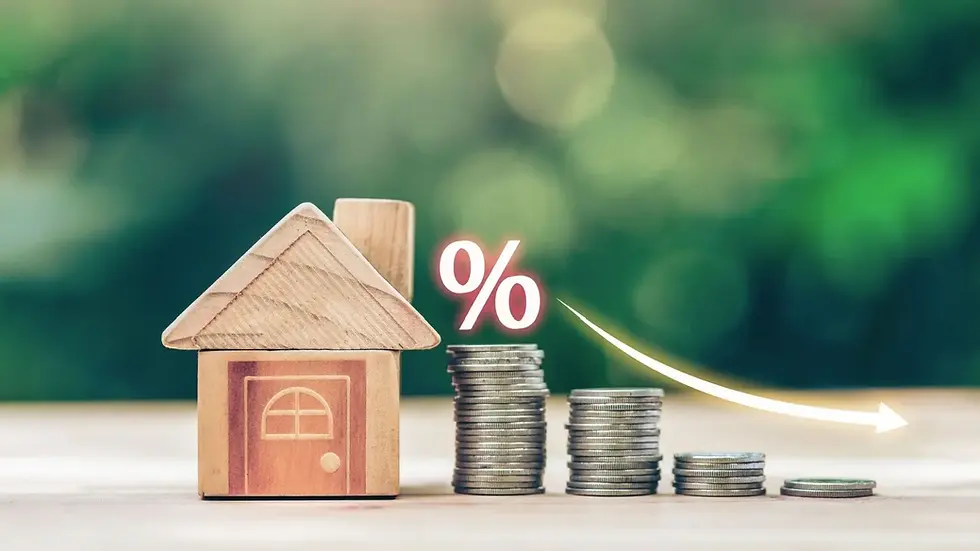Step-by-Step Process to Apply for an SBI Home Loan
- Deepak Mishra
- May 19
- 4 min read

Buying your dream home is an exciting milestone, and for millions of Indians, SBI home loan solutions make that dream a reality. The State Bank of India, being the largest public sector bank in the country, is one of the most trusted names in home financing. With competitive rates, easy documentation, and digital-first processes, SBI has made it easier than ever to secure housing finance.
If you're planning to buy a home and want to apply for an SBI home loan, this detailed guide will walk you through the entire application process, highlight key eligibility requirements, and give you the scoop on the latest home loan interest rate trends in 2025.
Why Choose an SBI Home Loan?
Before diving into the step-by-step process, let’s understand why SBI continues to be a top lender for home loans:
Competitive interest rates
Transparent processing fees
Wide network of branches
Online and offline application options
Pre-approved loan offers for existing customers
Products like SBI MaxGain, SBI Flexipay, and SBI Realty Loan for different borrower needs
In short, SBI caters to both salaried and self-employed individuals with tailor-made solutions backed by strong customer service and government trust.
Step-by-Step Process to Apply for an SBI Home Loan
Step 1: Check Eligibility
The first step is to check if you are eligible for an SBI home loan. SBI typically considers the following factors:
Age: 18 to 70 years
Income: Minimum ₹25,000 per month (varies by location and profession)
Employment: Salaried, self-employed, or professional
Credit Score: Ideally 750 or above
Loan Amount: Based on your repayment capacity and property value
You can check your eligibility using SBI’s online home loan eligibility calculator.
Step 2: Know the Latest Home Loan Interest Rate
In 2025, the latest home loan interest rate from SBI starts from 8.35% per annum for salaried applicants with high credit scores. Here’s a quick breakdown:
Applicant Type | Interest Rate (p.a.) | Notes |
Salaried (CIBIL 750+) | 8.35% – 8.55% | Best rates apply |
Self-employed | 8.50% – 9.10% | Slightly higher rates |
Women borrowers | Concession of 0.05% | Encouragement for women home buyers |
MaxGain Home Loan | Floating rate | Interest saving on surplus funds |
Tip: Keep checking SBI’s website or use their rate calculator as interest rates are subject to change depending on the RBI repo rate and internal policies.
Step 3: Decide the Loan Type
SBI offers several home loan products. Choose the one that best matches your needs:
Regular Home Loan: Standard loan for purchasing a ready-to-move-in or under-construction property
SBI MaxGain: Ideal for those who want an overdraft feature to save interest
SBI NRI Home Loan: Tailored for Non-Resident Indians
SBI Flexipay: Higher loan eligibility with lower EMIs in the initial years (best for young professionals)
SBI Realty: Buy a plot and construct your home later
Step 4: Gather Required Documents
Before applying, keep these documents ready:
For Salaried Applicants:
Identity proof (Aadhaar, PAN, Passport)
Address proof
Salary slips (last 3 months)
Bank statement (last 6 months)
Form 16 or Income Tax Returns (last 2 years)
Property documents (agreement, title deed, NOC)
For Self-Employed Applicants:
Business proof (GST registration, company license)
Income tax returns (last 3 years)
CA-audited financial statements
Bank statements (last 6 months)
Step 5: Apply Online or Offline
You can apply for an SBI home loan in two ways:
Online Application:
Visit homeloans.sbi
Choose your loan type and click “Apply Now”
Fill in your personal, income, and property details
Upload your documents and submit the form
You will receive a reference number and a call from an SBI representative
Offline Application:
Visit the nearest SBI branch with your documents
Fill out the physical application form
Submit photocopies of required documents
SBI will provide an application number for future tracking
Step 6: Application Processing & Verification
After submission, the bank carries out the following:
Credit appraisal: Your CIBIL score and income are analyzed
Document verification: All submitted documents are cross-verified
Property valuation: SBI conducts a technical and legal assessment of the property
This process usually takes 7–15 working days, depending on document clarity and property stage.
Step 7: Sanction & Offer Letter
If your application meets all criteria, SBI will issue a sanction letter. It contains:
Sanctioned loan amount
Interest rate (fixed/floating)
Repayment tenure
EMI amount
Special conditions, if any
You’ll need to sign and accept the offer to proceed.
Step 8: Property Agreement & Legal Compliance
After loan sanction:
Submit final property documents including the agreement to sale
Pay stamp duty and registration charges
Ensure the builder or seller provides a No Objection Certificate (NOC) if required
Step 9: Loan Disbursement
Upon completion of all legal and documentation formalities, SBI disburses the loan:
Full disbursement: For ready-to-move-in homes
Partial disbursement: For under-construction properties in phases
The disbursed amount is usually paid directly to the seller or builder, not the borrower.
Step 10: Start EMI Payments
Your EMI (Equated Monthly Installment) will begin as per the agreed repayment schedule. You can choose between ECS, NACH, or auto-debit from your SBI account.
Use SBI’s EMI calculator to stay ahead of your payments and plan prepayment if you have surplus funds.
Final Thoughts
Applying for an SBI home loan in 2025 is a structured and borrower-friendly process. From transparent eligibility checks to online applications and competitive rates, SBI makes home financing accessible for all income groups.
Make sure to stay updated with the latest home loan interest rate to lock in the best possible deal. A good credit score, proper documentation, and a clear understanding of your financial responsibilities can make the journey from application to approval smooth and hassle-free.



Comments